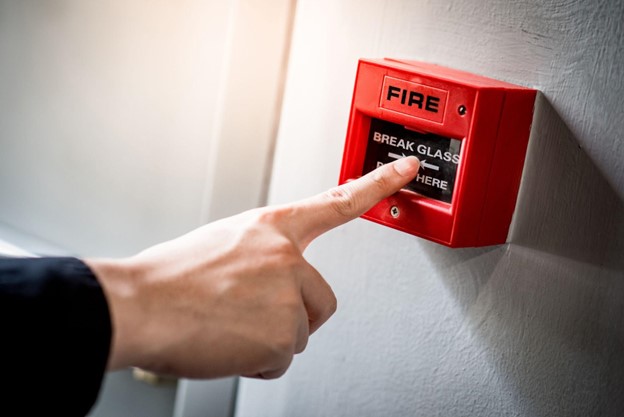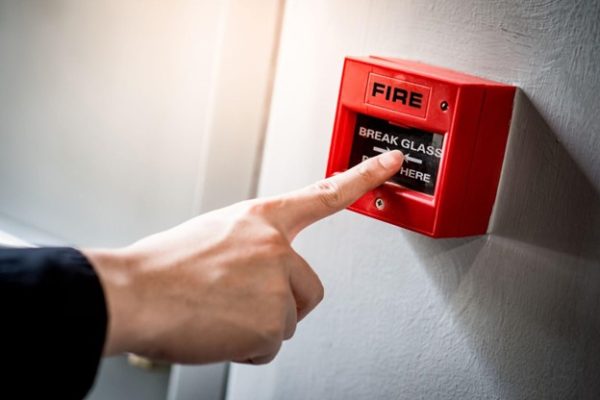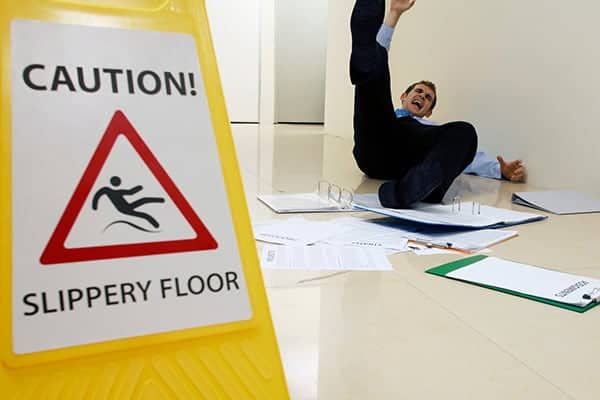
Fire hazards in the workplace
Posted on 18th August 2022 by Katherine Ducie

By law, every business in the UK is required to carry out workplace fire risk assessments. These comprehensive checks are designed to identify fire hazards early to ensure they are eliminated at the source. If hazards cannot be completely removed due to the nature of work conducted by a business, these assessments help organisations put control measures in place to at least reduce and manage residual risk.
The fact is, the majority of workplaces contain all the necessary components needed to cause serious fire. From boxes of paperwork and electrical equipment to heavy machinery and flammable liquids, office and factory workplaces alike can be dangerous fire traps if not monitored carefully. For this reason, carrying out regular assessments and frequently identifying potential fire hazards before they become an issue is essential for all businesses.
In this guide, we take a look at the most common fire hazards found in the workplace and explain how these hazards can be prevented.
Common fire hazards
When it comes to common fire hazards in the workplace, there are three main categories. These are:
1. Ignition hazards
All fires require a source of ignition to get started. By identifying and removing these potential sources (or putting protocol in place to better control them) fire hazards can be avoided. Where these sources absolutely cannot be removed – for example, cooking equipment in a commercial bakery – controlling the hazard would involve ensuring open flames are separated from combustible materials.
As well as business function, it is also important to think about location when carrying out ignition hazard assessments. For example, your business may need to make use of heavy machinery that could produce sparks when in operation. This can be perfectly safe in the right environment. However, if it is located close to a potentially flammable atmosphere – for example, a boiler room or fuel store – the risk increases dramatically.
Examples of ignition fire hazards include:
- Electrical equipment
- Portable and fixed heaters
- Overheating machinery
- Overloaded electrical circuits
- Cooking equipment
- Flames/sparks created by equipment (power tools, welding equipment, etc.)
- Materials that generate static electricity (synthetic carpets, silk, polyester, etc)
- Hot surfaces
- Boilers
- Employees’ cigarettes/e-cigarettes
2. Fuel hazards
Aside from an ignition source, fuel is also needed for a fire to start and grow. These are the most common types of workplace fire hazards. With this in mind, identifying and then removing/controlling all sources of potential fuel in the workplace is also a vital part of a fire hazard assessment. It’s important to note that in this context ‘fuel’ doesn’t just refer to petrol, diesel and gas. The word is used to describe any flammable material that can catch fire and burn should it come into contact with an ignition source.
Once again, by removing these fuels, or controlling them through location separation, you can minimise the fire risk in a given workplace. However, it’s worth noting that not all sources of fuel can be removed – for example, materials integral to the structure of a building, such as wooden struts. But, as a rule, modern structural materials are designed in a way that ensures they are not easily combustible.
Examples of fuel fire hazards include:
- Paper, cardboard and paper packaging
- General waste (household rubbish, recycling etc)
- Wooden/plastic furniture
- Fixtures and fittings (carpets, ceiling tiles, light fixtures, etc.)
- Insulations (wall/ceiling foam insulation, electrical insulation, external cladding, etc)
- Sealants (found on window fittings, kitchens and bathrooms)
- Paints and wallpapers
- Inks and toner (used in office printers)
- Chemicals (cleaning fluids, adhesives, solvents, etc.)
3. Oxygen hazards
The final ingredient a fire needs to really take hold is oxygen. For this reason, having a good idea of where oxygen sources can be found in your workplace and how they can be prevented from fuelling a fire, is essential.
Of course, not all sources of oxygen are bad. Office windows may need to be opened on a hot day and factory floors may require good sources of ventilation to prevent build-ups of harmful fumes. However, a well-conducted fire risk assessment should identify where additional sources of oxygen are dangerous. They will also highlight how necessary oxygen sources can be safely controlled.
Examples of oxygen fire hazards include:
- Open doors and windows
- Air conditioning systems
- Holes/gaps in the structure (including in window/door frames)
- Oxygen cylinders
- Oxidising materials
How to prevent fire hazards in the workplace
The best way to prevent fire hazards in the workplace is through a process of assessment, inspection, and education. As discussed above, all employers in the UK must conduct regular workplace fire risk assessments. These assessments help to identify, remove and/or control fire hazards in the workplace. However, this should make up just one part of a business’ fire safety policy. Other aspects of a good fire safety protocol should involve:
- Staff training – all employees should have fire safety training as part of their induction, as well as regular refresher training. This may also include certain employees receiving specialist fire marshal training.
- Regular inspections and maintenance of equipment – from electrical PAT tests to smoke alarm inspections and fire extinguishers audits, all equipment needs to be regularly inspected and maintained.
- Effective waste management – all waste should be disposed of correctly, especially all flammable materials. Additionally, spillages need to be cleaned up immediately, particularly when involving flammable liquids.
- A tidy workplace policy – the workplace should be kept as tidy as possible. This includes ensuring all fire doors are kept clear and free of clutter at all times.
- Take out
For more guidance on fire hazards in the workplace and your legal requirements as a business owner, visit the Health and Safety Executive (HSE) website here – Britain’s national regulator for workplace health and safety.


